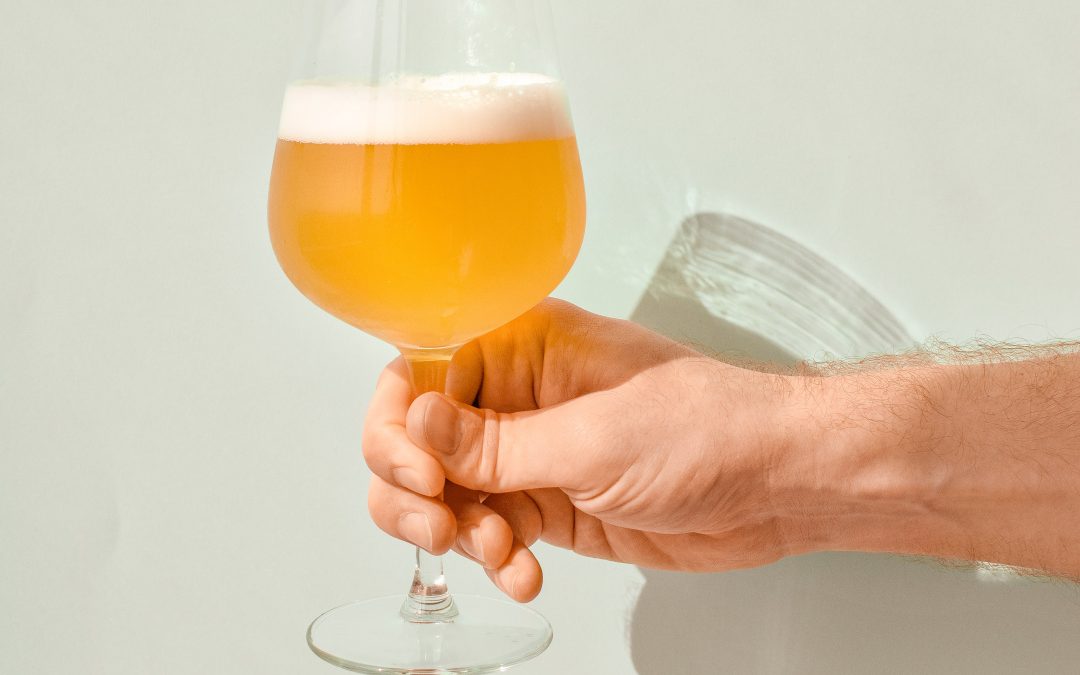Hazy Summer Days
by Steve Lonsway

Give any Brewmaster malt, hops, water and yeast and they will create magic. Some follow the paths of traditional styles and brew them their whole career constantly tweaking the recipes along the way until they achieve what they think is perfection. Others will dabble in all styles, focusing more on the processes of brewing. Then there are the brewers who work diligently on perfecting the profiles of the ingredients. And, of course, you have the brewing guys and gals who are always looking to create the perfect brew to their own liking and sometimes it becomes trendsetting. Often, this is not the original intent, just the result.
For years, Pale Ales dominated the craft market so the consumer’s desire for hop-heavy flavors was obvious. Hop growers got ahead on this trend and started working day and night to create hybrid varieties to please the thirsty hop head masses. Then along comes John Kimmich of The Alchemist in Stowe, Vermont. He brewed a beer called Heady Topper that took New England by storm. With very little marketing, this beer grew in popularity simply by word of mouth. Neighboring breweries caught on to this style and now it can be found throughout New England. Of course, it has not been contained there. Its popularity ravaged through the U.S. like wildfire, so much that the style became officially recognized by the Brewers Association in 2018. This style is known as New England Style IPA, Hazy Pale Ale or Juicy Pale Ale.
The attributes of this style are citrus, floral, and juicy flavors. Although a massive number of hops are dedicated to this style, it’s how, and more importantly when, the hops are added to the brewing process that set it apart. The beer emphasizes the hop aromas rather than the bitterness so that even the faint-of-hop hearts can enjoy it. The beer will appear quite hazy and carry a smooth mouthfeel due to the brewing techniques used and the adjustments of the water chemistry in the process. Also, well thought-out hop additions will really accent the profile to a point of perfection. Certain hops influence this style. Some of the most common varieties used in Juicy Pale Ales are Citra, Amarillo, Galaxy, Mosaic, and El Dorado which all lend citrus and floral aromas in spades.
Although not traditional, adding lactose, fruits and/or spices to a Juicy Pale Ale can increase the creaminess and mouthfeel immensely. This, too, is a current beer trend. These concoctions are named “Milkshake IPAs” and have been getting a lot of play at the retail level.
If you’re salivating, run to your local brewer or retailer and search out a few of these styles. With their continually growing popularity, they will not be hard to find. Your toughest decision is how many to purchase.
Here are Hazys that top my list:
HAZYrdous Pale Ale – Stone Arch Brewpub (not that I am biased), Appleton
Juicy McJuice Face – Appleton Beer Factory, Appleton
Hazy Little Thing – Sierra Nevada Brewing Company, NC & CA
King Sue (Imperial) – Toppling Goliath, Decorah, IA
Juice Cloud – Lion’s Tail Brewing, Neenah, WI



